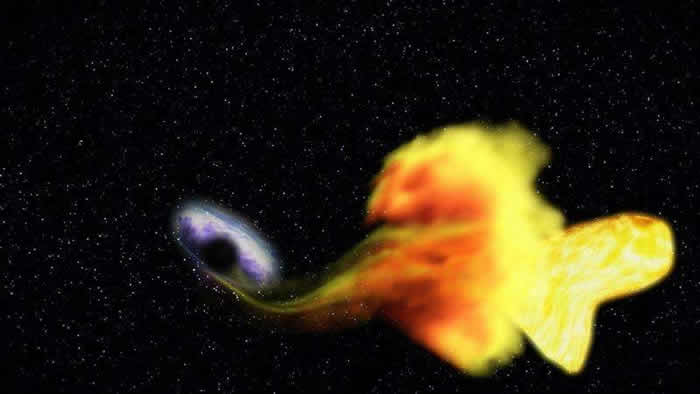Ejection of gasses around black hole thanks to magnetism
Creating a model to explain the force that causes gases to be blown away from a black hole, an international team of researchers have found the force to be magnetism.
In their paper published in the journal Nature Astronomy, the team describes the factors that went into their model and the degree of confidence they have in it.
Scientists have suspected that magnetic fields were responsible for pushing gases away from a black hole since the 1970s, but there was not a consensus – others suggested it might have been due to the heat of the gas.
In this new effort, the researchers built on a prior model that had found magnetism to be the force pushing gas away from a giant black hole – this time; they based their model on small black holes and found the same result. This means that it is likely the case for all black holes.
The gases in question come from a companion star – the black hole strips the star’s gas and as it does so, creates a spiral with an accretion disk. As the spiral turns, an electric current is generated in the accretion disk, which forms a vortex pulling in more and more matter. But, the model showed, some of the magnetism serves to push gas from the outer edges of the spiral out into space, where it escapes and can be observed by X-ray telescopes on Earth.
The model also ruled out heat from the gas as the cause for its expulsion – if it were heat, the model showed, the gas would have been blown much farther than readings have shown. The researchers suggest the magnetic fields likely arc from pole to pole, though there is still no way to prove it.
It was also noted that the expulsion of gas from around the black hole could be powerful enough in some situations to actually push out all of the gas, leaving the galaxy it inhabits empty and unable to form new stars. Such galaxies have been observed as simple blank red areas in space.


Comments are closed, but trackbacks and pingbacks are open.